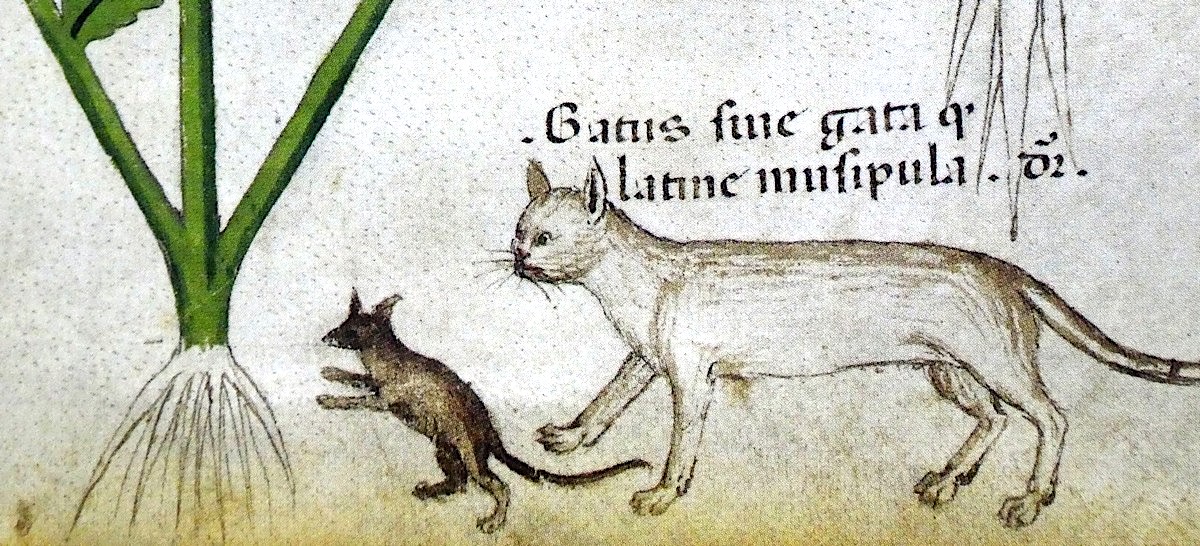
“The Naming of Cats is a difficult matter,” declares the opening poem in Old Possum’s Book of Practical Cats by T. S. Eliot. But the possibilities are many and varied: “Peter, Augustus, Alonzo or James”; “Plato, Admetus, Electra, Demeter”; “Munkustrap, Quaxo, or Coricopat.” Things must have been less complicated in the Middle Ages, when you could just call a cat Gyb and be done with it. “The shortened form of the male name Gilbert, Gyb” explains Kathleen Walker-Meikle in Medieval Cats, dates as “a popular name for individual pet cats” at least back to the late fourteenth century.
In a slightly different form, the name even appears in Shakespeare, when Falstaff describes himself as “as melancholy as a gib cat.” Gyb’s equivalent across the Chanel was Tibers or Tibert; the sixteenth-century French poet Joachim du Bellay kept a “beloved gray cat” named Belaud.
Legal texts reveal that the Irish went in for “cat names that refer to the animal’s physical appearance,” like Méone (“little meow”), Cruibne (“little paws”), and Bréone (“little flame”). Walker-Meikle also highlights Pangur Bán, a cat “immortalized in a ninth-century poem by an Irish monk.” This hymn to the parallel skills of human and feline begins, in Seamus Heaney’s English translation, as follows:
Pangur Bán and I at work,
Adepts, equals, cat and clerk:
His whole instinct is to hunt,
Mine to free the meaning pent.
Frequent Open Culture readers may be reminded of the twelfth-century Chinese poet who wrote of being domesticated by his own cats, verses we featured here a few years ago. More recently, we put up a list of 1,065 Medieval dog names, which run the gamut from Garlik, Nosewise, and Hosewife to Hornyball, Argument, and Filthe. You’ll notice that the names given to dogs in the Middle Ages seem to have been more amusing, if less dignified, than the ones given to cats. Perhaps this reflects the strong, clearly centuries-and-centuries-old differences between the natures of the animals themselves, each with its own strengths and weaknesses. But whatever our preferences in that area, who among us couldn’t do with a Pangur Bán of our own?
Related content:
A List of 1,065 Medieval Dog Names: Nosewise, Garlik, Havegoodday & More
Cats in Medieval Manuscripts & Paintings
Cats in Japanese Woodblock Prints: How Japan’s Favorite Animals Came to Star in Its Popular Art
T. S. Eliot Reads Old Possum’s Book of Practical Cats & Other Classic Poems (75 Minutes, 1955)
In 1183, a Chinese Poet Describes Being Domesticated by His Own Cats
Based in Seoul, Colin Marshall writes and broadcasts on cities, language, and culture. His projects include the Substack newsletter Books on Cities, the book The Stateless City: a Walk through 21st-Century Los Angeles and the video series The City in Cinema. Follow him on Twitter at @colinmarshall or on Facebook.

0 Commentaires